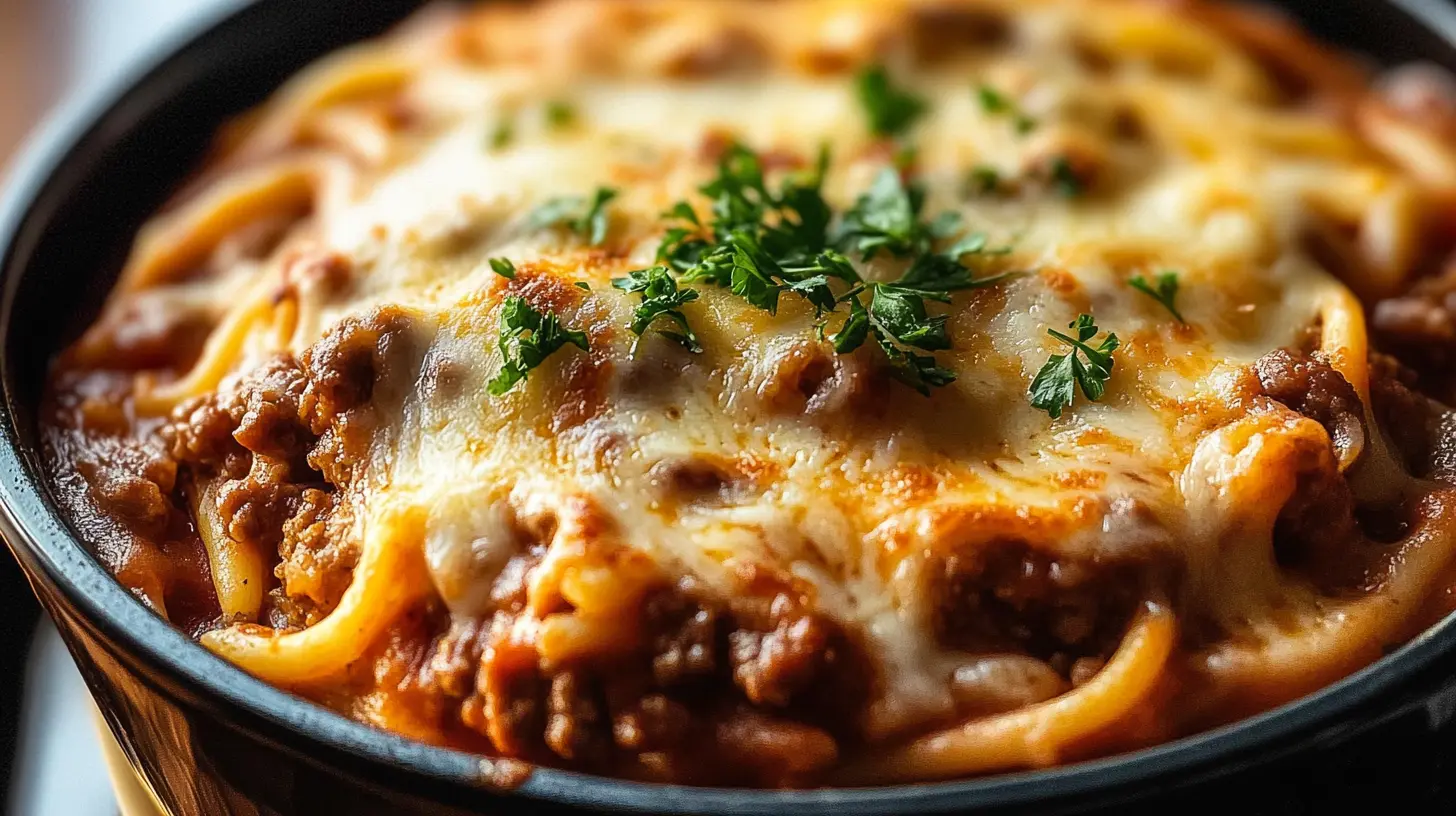Introduction to Korean BBQ Recipe
Korean BBQ has become a global culinary phenomenon, not only known for its bold flavors but also for its interactive grilling experience and variety of healthy ingredients. Furthermore, this Korean BBQ recipe is perfect for home cooks who not only want to enjoy the rich flavors of marinated meats and vegetables but also want the convenience of preparing it in the comfort of their own kitchens. In addition, it’s easy to prepare, suitable for various dietary needs, and can be customized for different occasions, whether it’s a family dinner, a quick weeknight meal, or even a fun gathering with friends.
Korean BBQ is not only delicious but also highly nutritious, often featuring lean proteins like beef, chicken, or tofu, along with fresh vegetables, making it a balanced meal for everyone. Moreover, the versatility of Korean BBQ means you can easily adjust the recipe to fit low-carb, gluten-free, or vegan diets. Whether you’re a busy parent, a student, or even a food enthusiast looking for your next great recipe, Korean BBQ is an excellent choice that can be tailored to suit any lifestyle.
For inspiration, check out this Tteokbokki recipe for another Korean classic that pairs well with BBQ.
Benefits and Advantages of Korean BBQ Recipe
There are several benefits and advantages to trying out this Korean BBQ recipe:
- Easy to Prepare: One of the biggest advantages of Korean BBQ is how simple it is to prepare. Whether you’re grilling beef, chicken, or tofu, the marinade does most of the work in infusing the meat with flavor. All you need is a few key ingredients and a hot grill to get started.
- Healthy and Nutritious: Korean BBQ emphasizes balance in ingredients, often featuring lean proteins and a variety of vegetables. It’s an excellent choice for diet-conscious individuals, as you can control the amount of sugar and sodium in the marinades, ensuring a healthier meal. The vegetables served alongside are typically fresh, providing essential vitamins and minerals.
- Versatile for Different Diets: Whether you’re gluten-free, vegan, or keto, this Korean BBQ recipe can easily be adjusted to meet your dietary needs. For example, you can use gluten-free soy sauce for the marinade or opt for tofu or mushrooms as a vegan protein substitute.
- Perfect for Social Gatherings: Korean BBQ is not just a meal, but an experience. The communal aspect of grilling and eating together makes it perfect for gatherings with friends or family. You can also serve it with a variety of side dishes, like Kimchi or pickled vegetables, which adds more flavor to the meal.
Ingredients Overview
Essential Ingredients for Korean BBQ Recipe
To make this Korean BBQ recipe, you will need the following ingredients:
- 1 pound beef short ribs (or any protein of your choice): Traditional Korean BBQ often uses beef short ribs, but you can substitute with chicken, pork, or even tofu for a vegan option.
- ½ cup soy sauce: Provides the salty and savory base for the marinade.
- 2 tablespoons sesame oil: Adds a nutty flavor and richness to the marinade.
- 3 tablespoons brown sugar (or honey): Balances out the saltiness with a hint of sweetness.
- 4 cloves garlic (minced): Adds a depth of flavor and a slight spice to the marinade.
- 1 teaspoon ginger (minced): Ginger brings a fresh, zesty flavor that complements the garlic.
- 2 green onions (chopped): Adds a mild onion flavor and garnish to the dish.
- 1 tablespoon rice vinegar: The vinegar adds acidity to balance the sweetness and helps tenderize the meat.
- Sesame seeds (optional): For garnish and an extra crunch.
- Vegetables for grilling (zucchini, bell peppers, mushrooms): Vegetables are a staple in Korean BBQ, providing balance and variety.
Vegan, Gluten-Free, and Low-Calorie Options
- Vegan: Replace the beef with tofu or portobello mushrooms and ensure the soy sauce is vegan-friendly.
- Gluten-Free: Use tamari or gluten-free soy sauce in place of regular soy sauce.
- Low-Calorie: Opt for lean proteins like chicken breast or tofu and reduce the amount of sugar in the marinade.
Dietary Substitutions to Customize Your Korean BBQ Recipe
- Vegan and Vegetarian: For a plant-based version, replace the meat with tofu, tempeh, or mushrooms. Tofu and tempeh absorb the marinade well, providing a rich and flavorful bite. Grilled vegetables, like eggplant or zucchini, also make great additions.
- Gluten-Free: Swap out regular soy sauce for a gluten-free version like tamari or coconut aminos. Be sure to check other ingredients in your marinade to confirm they are gluten-free.
- Low-Carb/Keto: Use low-carb sweeteners like stevia or monk fruit instead of sugar in the marinade. You can also pair the BBQ with lettuce wraps instead of rice for a keto-friendly option.
How to Prepare the Perfect Korean BBQ Recipe: Step-by-Step Guide
Follow these simple steps to prepare the best Korean BBQ at home:
Step 1: Prepare the Marinade
In a large bowl, combine soy sauce, sesame oil, brown sugar, garlic, ginger, and rice vinegar. Stir well to ensure the sugar dissolves completely. This marinade will serve as the flavor base for the BBQ.
Step 2: Marinate the Protein
Place your protein of choice (beef, chicken, tofu, etc.) into the marinade. Let it sit in the fridge for at least 2 hours, but ideally overnight. This allows the flavors to penetrate the meat and ensures it’s tender and juicy.
Step 3: Preheat the Grill
Preheat your grill to medium-high heat. If using a stovetop grill, set the heat to medium-high. Lightly oil the grill grates to prevent sticking.
Step 4: Grill the Protein and Vegetables
Remove the protein from the marinade and place it on the grill. Cook for about 3-5 minutes per side, depending on the thickness of the meat. Vegetables like zucchini, mushrooms, and bell peppers should also be grilled until they are tender and slightly charred.
Step 5: Garnish and Serve
Once the meat and vegetables are grilled to perfection, garnish with sesame seeds and chopped green onions. Serve with rice, lettuce wraps, or Korean side dishes like Kimchi for a complete meal.
Mastering Korean BBQ Recipe: Advanced Tips and Variations
For those looking to take their Korean BBQ to the next level, here are a few advanced tips:
- Charcoal Grill for Authentic Flavor: If possible, use a charcoal grill for an authentic Korean BBQ experience. The smokiness from the charcoal enhances the flavor of the meat and vegetables.
- Spice It Up: Add some gochujang (Korean chili paste) to the marinade for a spicy kick. This fermented chili paste adds heat and depth to the flavor.
- Serve with Traditional Korean Sides: Korean BBQ is typically served with a variety of side dishes (banchan), including Kimchi, pickled radishes, and steamed egg. Incorporating these will elevate your meal.
How to Store Korean BBQ: Best Practices
If you have leftovers or want to prep ahead, here’s how to store your Korean BBQ:
- Refrigeration: Store any leftovers in an airtight container in the fridge for up to 3 days. Reheat on a skillet or in the microwave until warmed through.
- Freezing: You can freeze marinated, uncooked meat for up to 3 months. Be sure to defrost it in the fridge before grilling.
Nutritional Value of Korean BBQ Recipe
Here’s a general breakdown of the nutritional value per serving (based on beef short ribs and vegetables):
- Calories: 400
- Protein: 25g
- Fat: 20g
- Carbohydrates: 15g
- Fiber: 3g
- Sugar: 10g
- Sodium: 800mg
For a lighter version, consider using lean proteins like chicken or tofu and reducing the sugar in the marinade.
FAQs: Frequently Asked Questions About Korean BBQ Recipe
Can I use chicken instead of beef for Korean BBQ?
Yes, you can substitute chicken, pork, or even tofu for the beef in this recipe. Adjust the grilling time accordingly, as chicken cooks faster than beef.
How long should I marinate the meat?
For the best flavor, marinate the meat for at least 2 hours. However, overnight marination will yield the most tender and flavorful results.
What sides go well with Korean BBQ?
Korean BBQ pairs well with not only a variety of sides like rice but also with lettuce wraps, grilled vegetables, and traditional Korean banchan. Additionally, banchan such as Kimchi or pickled vegetables complement the rich, smoky flavors of the barbecue. Moreover, these sides provide a refreshing contrast, while also adding texture and balance to the meal. Furthermore, the combination of grilled meats and banchan enhances the overall dining experience, making each bite more exciting and satisfying.
Can I make this recipe gluten-free?
Absolutely! Just substitute regular soy sauce with tamari or coconut aminos to make the recipe gluten-free.
What are the main ingredients in Korean barbecue?
The main ingredients in Korean barbecue (KBBQ) revolve around a variety of proteins, marinades, and side dishes. The essential ingredients are:
- Meat: The proteins typically include beef (like short ribs and brisket), pork (belly or jowl), and chicken. For plant-based options, tofu or mushrooms are often grilled.
- Marinade: Korean BBQ marinades are a mix of savory, sweet, and umami flavors. Essential ingredients in the marinade include soy sauce, sesame oil, garlic, sugar (or honey), rice vinegar, ginger, and sometimes gochujang (Korean chili paste).
- Side Dishes (Banchan): A variety of small side dishes like kimchi, pickled radishes, spinach, and steamed egg are typically served alongside Korean BBQ.
- Vegetables: Common vegetables used for grilling include zucchini, mushrooms, and bell peppers. These vegetables often absorb the marinade and complement the grilled meat.
What is usually in Korean BBQ?
Korean BBQ usually consists of different types of marinated and non-marinated meats, grilled vegetables, dipping sauces, and an assortment of side dishes called banchan. The main components include:
- Meats: Beef short ribs (Galbi), pork belly (Samgyeopsal), and thinly sliced brisket (Chadolbaegi) are popular choices.
- Marinades: Soy sauce, sesame oil, garlic, ginger, sugar, and gochujang are the base ingredients used in marinades.
- Banchan: Side dishes like kimchi, pickled radish, steamed egg, and spinach salad enhance the meal by adding variety and contrasting textures and flavors.
- Rice or Lettuce Wraps: Rice is often served as a base, and lettuce wraps (Ssam) are used to wrap the grilled meats along with various sauces and banchan.
What 3 sauces are served at Korean BBQ?
Three common sauces typically served at Korean BBQ are:
- Ssamjang: A thick, spicy, and savory paste made from gochujang (Korean chili paste), doenjang (fermented soybean paste), garlic, sesame oil, and sugar. It’s typically used as a dipping sauce or spread in lettuce wraps.
- Gochujang: A sweet and spicy fermented chili paste, it adds heat and depth of flavor to the BBQ. Gochujang can be mixed with other ingredients to make a more complex dipping sauce.
- Soy Sauce Marinade: A simple soy sauce-based dipping sauce with sesame oil, garlic, and sometimes green onions is often served alongside the meat to enhance its flavor after grilling.
What cuts of meat for Korean BBQ?
Korean BBQ is famous not only for its bold flavors but also for its use of a wide variety of meats. The most common cuts include:
- Beef Short Ribs (Galbi): Marinated in a savory-sweet sauce, this is one of the most popular cuts for Korean BBQ. Furthermore, the marinade helps tenderize the meat while adding a rich flavor.
- Beef Brisket (Chadolbaegi): Thinly sliced brisket that cooks very quickly and is typically unseasoned, therefore allowing diners to season it with various sauces. Additionally, it has a mild flavor that pairs well with banchan.
- Pork Belly (Samgyeopsal): Unmarinated thick slices of pork belly, often grilled until crispy, served with dipping sauces or wrapped in lettuce with vegetables and banchan. As a result, it offers a balance of richness and freshness.
- Pork Jowl (Hangjeongsal): Another popular cut, known not only for its marbling but also for its tenderness. Moreover, it has a unique texture that sets it apart from other cuts.
- Chicken Thighs: Boneless thighs are often marinated in a soy-based sauce and grilled for their tender texture. Thus, they offer a flavorful and juicy alternative to beef and pork options.
What makes Korean BBQ so good?
Korean BBQ stands out not just because of its bold flavors, but also due to its interactive grilling process. The reasons it is so widely loved include:
- Flavorful Marinades: The use of soy sauce, sesame oil, garlic, and sugar in marinades creates a perfect balance of salty, sweet, and umami flavors. In addition, the marinades tenderize the meat, ensuring a juicy bite.
- Customizable Dishes: Diners have the freedom to grill the meats themselves and pair them with different sauces, banchan, and vegetables, making each bite customizable. Furthermore, it allows everyone to tailor their meal to their own preferences.
- Communal Dining Experience: Korean BBQ is usually shared in a group setting where everyone participates in grilling, thereby creating a fun and social dining experience. Moreover, this shared experience fosters a sense of community at the table.
- Variety: The combination of grilled meats, fresh vegetables, pickled sides, and sauces creates an exciting array of textures and flavors in every bite. As a result, no two bites are the same, keeping the meal both enjoyable and dynamic.
What oil to use for Korean barbecue?
Sesame oil is not only traditionally used in Korean barbecue but also plays a key role in both marinades and as a dipping oil for grilled meats. Additionally, it adds a rich, nutty flavor that perfectly complements the smoky taste of grilled meats. Furthermore, sesame oil is often mixed with salt and pepper, creating a simple yet flavorful dipping sauce that enhances the taste of the grilled meat. However, if sesame oil is too strong for your taste, you can alternatively use vegetable oil or olive oil for grilling. In this way, you still achieve a great grilling experience while accommodating your personal preferences.
What is the difference between BBQ sauce and Korean BBQ sauce?
The main difference between traditional BBQ sauce and Korean BBQ sauce is the flavor profile and ingredients:
- Traditional BBQ Sauce: Western BBQ sauces, especially American-style, tend to have a tomato or vinegar base, and are sweet and tangy. Ingredients often include ketchup, molasses, vinegar, and spices.
- Korean BBQ Sauce: Korean BBQ sauce has a soy sauce base and incorporates ingredients like garlic, ginger, sesame oil, and sometimes gochujang. It’s both savory and slightly sweet, with umami flavors coming from the soy sauce and fermented pastes like gochujang or doenjang.
What spices are used in Korean food?
Korean food uses a variety of spices and seasonings that contribute to its rich, bold flavors. Some of the key spices and seasonings include:
- Gochugaru: Korean red chili pepper flakes, used for adding heat and a smoky flavor to dishes like kimchi and stews.
- Gochujang: A fermented chili paste made from gochugaru, sticky rice, and soybeans, commonly used in Korean BBQ marinades and bibimbap.
- Doenjang: A fermented soybean paste similar to miso but stronger in flavor, used in soups, stews, and marinades.
- Sesame Seeds: These are often toasted and used as a garnish or in sauces and marinades.
- Garlic and Ginger: These aromatics are widely used in nearly every Korean dish, from BBQ marinades to side dishes and soups.
What is traditionally served with Korean BBQ?
Korean BBQ is traditionally served with banchan, a variety of small side dishes that complement the grilled meats. Common banchan include:
- Kimchi: Fermented cabbage or radishes seasoned with chili pepper, garlic, ginger, and fish sauce.
- Pickled Radishes: Light and tangy, these are a refreshing side that balances the richness of the grilled meat.
- Lettuce Wraps (Ssam): Large leaves of lettuce or perilla are used to wrap the grilled meat along with rice, ssamjang, and garlic slices.
- Steamed Egg (Gyeranjjim): A light and fluffy steamed egg dish served as a warm side to the BBQ.
- Rice: Steamed white rice is typically served with Korean BBQ to provide a neutral base for the bold flavors of the grilled meat and sauces.
For more detailed information on Korean BBQ and its cultural significance, you can visit Wikipedia’s Korean BBQ page.
Conclusion
Korean BBQ is not only more than just a meal—it’s also a dynamic dining experience filled with bold flavors, aromatic spices, and a variety of delicious side dishes. Moreover, with its unique marinades, communal grilling style, and an array of sauces, Korean BBQ successfully brings together the best of Korean cuisine in a flavorful yet interactive way. Additionally, it offers a balance of savory and sweet elements that make each bite exciting. Whether you’re trying it at home or enjoying it at a restaurant, it’s a meal that is sure to satisfy and delight, while also ensuring an unforgettable experience every time.




